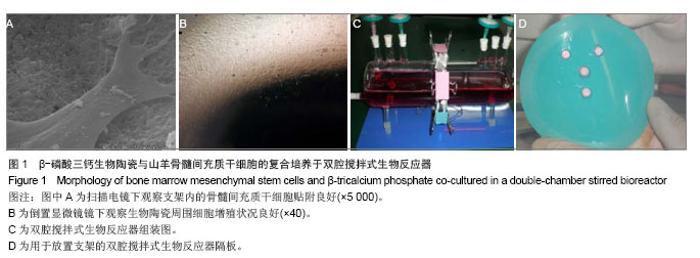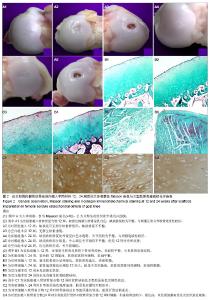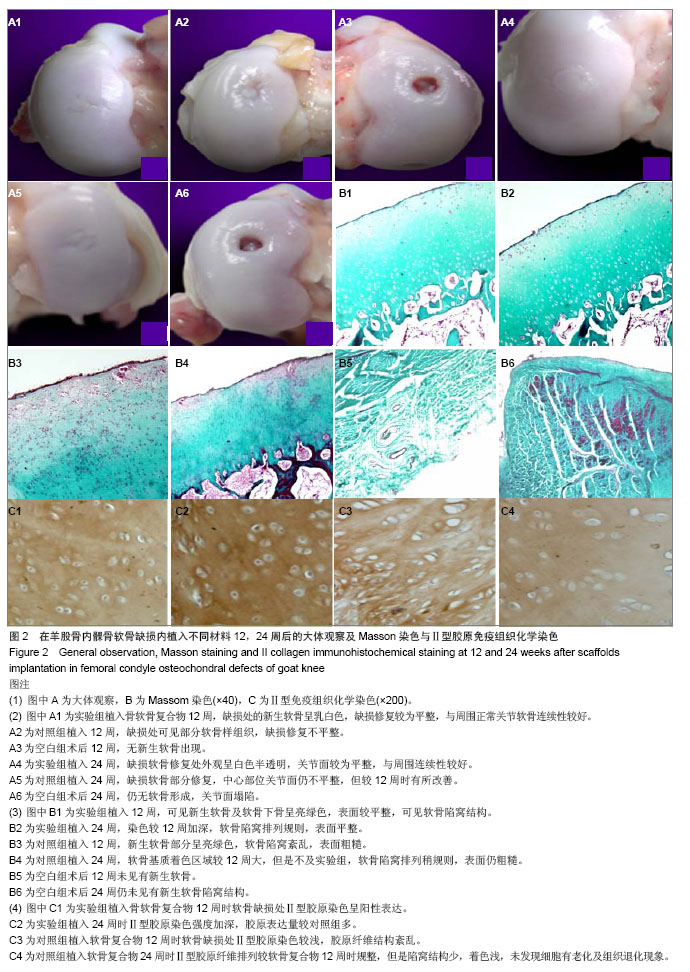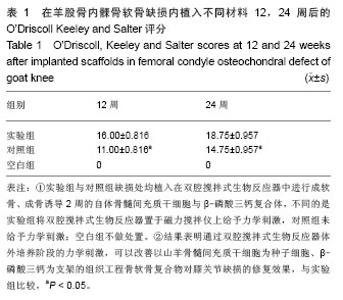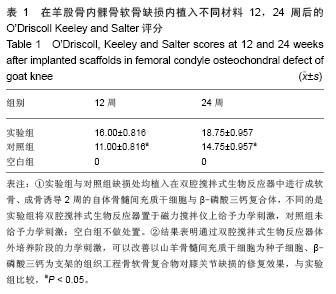| [1]Martin I,Miot S,Barbero A,et al.Osteochondral tissue engineering. J Biomech.2007;40(4):750-765.[2]Evans PJ,Miniaci A,Hurtig MB.Manual punch versus power harvesting of osteochondral grafts.Arthroscopy.2004; 20(3): 306-310. [3]Jiang YZ,Zhang SF,Qi YY,et al.Cell transplantation for articular cartilage defects: principles of past, present, and future practice.Cell Transplant.2011;20(5):593-607. [4]Huntley JS,McBirnie JM,Simpson AH,et al.Cutting-edge design to improve cell viability in osteochondral grafts.Osteoarthritis Cartilage.2005;13(8):665-671.[5]Yeatts AB,Choquette DT,Fisher JP.Bioreactors to influence stem cell fate: augmentation of mesenchymal stem cell signaling pathways via dynamic culture systems.Biochim Biophys Acta.2013;1830(2):2470-2480.[6]Sucosky P,Osorio DF,Brown JB,et al.Fluid mechanics of a spinner-flask bioreactor.Biotechnol Bioeng.2004;85(1):34-46.[7]中华人民共和国科学技术部.关于善待实验动物的指导性意见. 2006,09-30.[8]Li JW,Guo XL,He CL,et al.In vitro chondrogenesis of the goat bone marrow mesenchymal stem cells directed by chondrocytes in monolayer and 3-dimetional indirect co-culture system.Chin Med J(Engl).2011;124(19): 3080-3086.[9]Igarashi T,Iwasaki N,Kasahara Y,et al.A cellular implantation system using an injectable ultra-purified alginate gel for repair of osteochondral defects in a rabbit model.J Biomed Mater Res A.2010;94(3):844-855.[10]Grässel S,Stöckl S,Jenei-Lanzl Z.Isolation, culture, and osteogenic/chondrogenic differentiation of bone marrow-derived mesenchymal stem cells.Methods Mol Biol. 2012;879:203-267. [11]Wegener B,Schrimpf FM,Pietschmann MF,et al.Matrix-guided cartilage regeneration in chondral defects.Biotechnol Appl Biochem.2009;53(Pt 1):63-70. [12]Pörtner R,Meenen NM.Technological aspects of regenerative medicine and tissue engineering of articular cartilage. Handchir Mikrochir Plast Chir. 2010;42(6):329-336.[13]Forsey RW,Tare R,Oreffo RO,et al.Perfusion bioreactor studies of chondrocyte growth in alginate-chitosan capsules.Biotechnol Appl Biochem.2012;59(2):142-152.[14]Zhang WJ,Zhang L,Zhao CM,et al.Effects of rotating cell culture system on constructing of tissue engineering intervertebral nucleus pulposus. Zhonghua Yi Xue Za Zhi. 2010;90(31):2215-2218.[15]Wendt D,Jakob M,Martin I.Bioreactor-based engineering of osteochondral grafts: from model systems to tissue manufacturing.J Biosci Bioeng.2005; 100(5):489-494. [16]Madry H,Kaul G,Zurakowski D,et al.Cartilage constructs engineered from chondrocytes overexpressing IGF-I improve the repair of osteochondral defects in a rabbit model.Eur Cell Mater.2013;25:229-247.[17]Mauck RL,Soltz MA,Wang CC,et al.Functional tissue engineering of articular cartilage through dynamic loading of chondrocyte-seeded agarose gels.J Biomech Eng.2000; 122(3):252-260.[18]Waldman SD,Spiteri CG,Grynpas MD,et al.Long-term intermittent shear deformation improves the quality of cartilaginous tissue formed in vitro. J Orthop Res.2003; 21(4): 590-596.[19]Hansen U,Schunke M,Domm C,et al.Combination of reduced oxygen tension and intermittent hydrostatic pressure: a useful tool in articular cartilage tissue engineering.J Biomech.2001; 34(7):941-949.[20]Smith RL,Trindade MC,Ikenoue T,et a1.Effects of shear stress on articular chondrocyte metabolism.Biorheology. 2000;37(5): 95-102.[21]Botchwey EA,Pollack SR,Levine EM,et al.Bone tissue engineering in a rotating bioreactor using a microcarrier matrix system.J Biomed Mater Res.2001;55(2):242-253.[22]Koyanagi H,Ae K,Maehara H,et al.Massive bone reconstruction with heat-treated bone graft loaded autologous bone marrow-derived stromal cells and β-tricalcium phosphate composites in canine models.J Orthop Res.2013; 31(8):1308-1316.[23]Bernstein A,Niemeyer P,Salzmann G,et al.Microporous calcium phosphate ceramics as tissue engineering scaffolds for the repair of osteochondral defects: Histological results. Acta Biomater.2013;9(7):7490-7505.[24]Guo X,Wang C,Zhang Y,et al.Repair of large articular cartilage defects with implants of autologous mesenchymal stem cells seeded into beta-tricalcium phosphate in a sheep model.Tissue Eng.2004;10(11-12):1818-1829.[25]Chang CH,Lin FH,Lin CC,et al.Cartilage tissue engineering on the surface of a novel gelatin-calcium-phosphate biphasic scaffold in a double-chamber bioreactor.J Biomed Mater Res B Appl Biomater.2004;71(2):313-321.[26]Chen B,Pei GX,Wang K,et al.The method of accelerating osteanagenesis and revascularization of tissue engineered bone in big animal in vivo. Zhongguo Yi Xue Ke Xue Yuan Xue Bao.2003;25(1):26-31.[27]Cioffi M,Boschetti F,Raimondi MT,et al.Modeling evaluation of the fluid-dynamic microenvironment in tissue engineered constructs: A micro-CT based model.Biotechnology Bioengineering.2006;93(3):500-510. |
